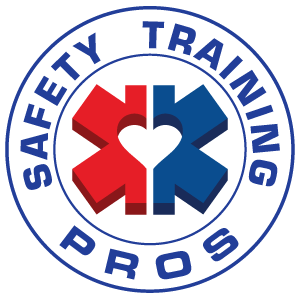November is American Diabetes Month. If you have diabetes, no matter what type, it means you have too much glucose in your blood, although the causes may differ. Too much glucose can lead to serious health problems. Here are 10 prevention tips, followed by current American Red Cross first aid protocol for treatment of diabetic emergencies,
6. Healthy Choices – Swap saturated fats and refined sugar for healthy fats in nuts and sweet whole fruit.
10. Learn More – Visit WebMD’s Diabetes Center for news, tips, a blood sugar tracker, and more.
What is Diabetes?
Diabetes is a chronic condition characterized by the body’s inability to process glucose (sugar) in the bloodstream. An organ called the pancreas secretes insulin, a hormone that causes glucose to be moved from the bloodstream into the cells, where it is used for energy. In a person with diabetes, either the pancreas fails to make enough insulin or the body’s cells are unable to respond to insulin. Either situation causes glucose levels in the bloodstream to increase.
A person with diabetes may manage the condition with insulin injections or oral medications. Diet and exercise also play an important role. To keep blood glucose levels within an acceptable range, food intake, exercise and medication must be balanced. A person with diabetes must follow a well-balanced diet, with limited sweets and fats. The timing of meals and snacks relative to exercise and medication is important as well.
may manage the condition with insulin injections or oral medications. Diet and exercise also play an important role. To keep blood glucose levels within an acceptable range, food intake, exercise and medication must be balanced. A person with diabetes must follow a well-balanced diet, with limited sweets and fats. The timing of meals and snacks relative to exercise and medication is important as well.
If food intake, exercise and medication are not in balance, the person may experience a diabetic emergency.
■ Hypoglycemia (excessively low blood glucose levels) can result if a person misses a meal or snack, eats too little food, exercises more than usual, vomits or takes too much medication.
■ Hyperglycemia (excessively high blood glucose levels) can result if a person eats too much food, takes too little medication, exercises less than usual or experiences physical or emotional stress.
Signs and Symptoms of Diabetic Emergencies –
A person who is having a diabetic emergency will seem generally ill. He or she may feel dizzy or shake, have a headache, or have cool, clammy skin. The person’s behavior may change (for example, he or she may become irritable, aggressive or argumentative). If the person is experiencing hyperglycemia, his or her breath may have a fruity or sweet odor. Severe hypoglycemia or hyperglycemia can result in confusion, seizures or loss of consciousness and may be life threatening.
First Aid Care for Diabetic Emergencies –
Call 9-1-1 or the designated emergency number if the person is unresponsive, not fully awake or having a seizure. While you wait for help to arrive, provide appropriate care. For example, if the person is not fully awake, interview bystanders and conduct a head-to-toe check, then put the person in the recovery position. Make sure the person’s airway is clear of vomit and monitor the person’s breathing until help arrives. If the person is having a seizure, take steps to keep the person safe while you let the seizure run its course.
If the person is known to have diabetes and thinks he or she is having a diabetic emergency, you may be able to help the person by giving him or her some form of sugar. Only offer the person sugar by mouth if the person is responsive, able to answer your questions and able to swallow. Some people may be responsive but not fully awake and therefore not able to safely swallow; in this case, do not attempt to give the person sugar by mouth. Instead, call 9-1-1 or the designated emergency number. You should also call 9-1-1 or the designated emergency number if you are not able to immediately obtain an acceptable form of sugar. Acceptable forms of sugar include:
- Glucose Tablets,
- Candies that can be chewed,
- Fruit Juice,
- Fruit Strips,
- Regular (non-diet) Soda,
- Milk,
- A Spoonful of sugar mixed into a glass of Water.
If it is safe for the person to have sugar by mouth, give 15 to 20 grams of sugar. Check the label on packaged products to determine how much of the package’s contents to give. Even if the person is experiencing hyperglycemia (too much glucose in the bloodstream), giving the person 15 to 20 grams of sugar will not cause additional harm. If possible, have the person check his or her blood glucose level. If the person is not feeling better in about 10 to 15 minutes, call 9-1-1 or the designated emergency number.
Some people with diabetes may have a prescribed glucagon kit that they carry with them to use in case of a severe hypoglycemic emergency. Glucagon is a hormone that stimulates the liver to release glucose into the bloodstream. The glucagon kit is only used when the person is unresponsive or has lost the ability to swallow. Those who spend a significant amount of time with the person (for example, family members, teachers, coaches or co-workers) may receive additional training to learn how to administer a glucagon injection.
Here at Safety Training Pros, we take health matters seriously. Making sure that you understand what Diabetes is, and what the signs and symptoms are, may help you care for a person who is having a diabetic emergency. If you, or a loved one, need first aid training please contact us at info@safetytrainingpros.com or 916-538-6447. We are here for all your safety training needs.
